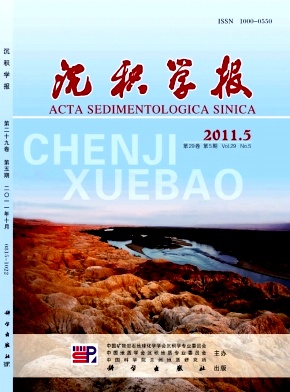Probability Cumulative Grain Size Curves in Sandy Conglomerate of the Upper Es4 in Yan 22 Block, Dongying Depression
- Received Date: 1900-01-01
- Rev Recd Date: 1900-01-01
- Publish Date: 2011-10-10
-
Key words:
- nearshore subaqueous fan
Abstract: On the basis of observation of cores, facies analysis and grain size analysis of 226 samples from 3 core wells, the probability cumulative grain size curves features of sandy conglomerate of the upper Es4 in Yan22 block Dongying Depression are summarized, the relationships between the probability cumulative grain size curves types and the hydrodynamic conditions are studied. Conclusions are gained as follows:
(1) The relationships between the probability cumulative grain size curves shapes and the hydrodynamic conditions or fluid property are found. The research shows that the grains size curves of the nearshore subaqueous fan have the characteristics of coarsegrained, widerange and lowslope, can be classified into 3 basic patterns (e.g. "uphill arched arc" pattern, one segment pattern and "quasi drag flow" pattern) and 4 transitional patterns. The "uphill arched arc" pattern represents debris flow deposition, one segment pattern represents turbidity deposition, the transitional patterns represent the deposition of transitional fluid property.
(2) The composition characteristics of probability cumulative grain size curve patterns vary with the change of microfacies or subfacies. Inner fan of the nearshore subaqueous fan, made up of thick sandy conglomerate with mixed fabrics of main channel, is typical of “broadly uphill arched arc” pattern,that represents debris flow deposition. Middle fan mainly has two kinds of deposition: debris flow deposition and drag flow deposition. The curve type of the lowermiddle part, made up of thick coarse sandstone with massive bedding, is "approximate uphill arched arc" pattern. And the upper part, made up of parallel bedding, are "one bouncing populationone suspension population sectionstransitional zone " pattern and " one rolling populationone bouncing populationone suspension population" trisegment pattern. Outer fan has three types of curve patterns, such as "low slope trisegment" pattern, "one
bouncing populationone suspension population sectionstransitional zone "pattern, "one rolling populationone bouncing populationone suspension population" trisegment pattern and etc, the sandstones often have parallel bedding, cross bedding and graded bedding. Note that, interchannel microface is typical of "steptype" multisegment pattern that reflects the effect of flood overflow from channels.
(3) The type evolution of the grain size curve patterns in nearshore subaqueous fan sandy conglomerate is inferred in the paper. With the transportation of nearshore subaqueous fan away from origination area, subfacies develop from inner fan, middle fan to outer fan in turn. As the behavior of the fluid evolves from debris flow to drag flow, the patterns of the grain size curves may change from "broadly uphill arched arc" pattern, "slightly high slope uphill arched arc" pattern to one segment pattern, "high slope multisegment" pattern.
(4) Besides nearshore subaqueous fan, terrigenous basin has other 5 different genetic types of sandy conglomerate, such as alluvial fan, braided river delta, fan delta, deepwater turbidity fan in steep slope and turbidity fan slides from nershore sand body front. All kinds of these depositions are affected by gravity flow, they all have the characteristics of close source, quick accumulation, while the grain size curves have the same characteristics of coarsegrained, widerange and lowslope. And thus the classification of the probability cumulative grain size curve patterns mentioned in this paper may be applicable to other different genetic types of sandy conglomerate.
| Citation: | YUAN Jing. Probability Cumulative Grain Size Curves in Sandy Conglomerate of the Upper Es4 in Yan 22 Block, Dongying Depression[J]. Acta Sedimentologica Sinica, 2011, 29(5): 815-824. |






 DownLoad:
DownLoad: